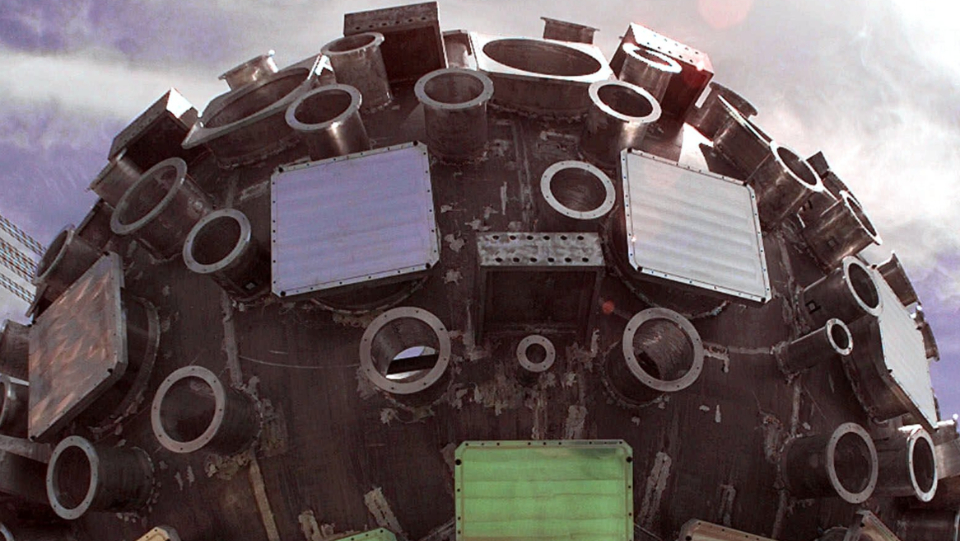
SAN FRANCISCO—At a time when events on the ground have renewed worldwide concerns about nuclear weapons’ potential to wreak existential catastrophe, one of the two sites where every nuclear weapon in the U.S. arsenal is designed is approaching a major milestone.
The Lawrence Livermore National Laboratory in Livermore, Calif., in the southeastern San Francisco Bay Area, is required under the National Environmental Policy Act to present a draft Site-Wide Environmental Impact Statement, or SWEIS, analyzing “potential environmental impacts associated with continuing LLNL operations and foreseeable new and/or modified operations and facilities for approximately the next 15 years.” Members of the public can comment in person at public hearings or submit written comments by email or regular mail.
NEPA requires that the statement must also include alternatives to current and proposed activities, opening the way for comments calling for ending or significantly altering the weapons-related programs which make up the vast majority of Livermore Lab’s activities and take up over 88% of the lab’s more than $2 billion budget request for fiscal year 2023.
Nearly 8 million people living within a 50-mile radius of the lab—virtually the whole Bay Area—would potentially be affected by an accident there involving radioactive materials. The lab’s 300 High Explosives Testing Range is close to the nearby city of Tracy. The lab’s work also has profound implications for safety and environmental issues at other nuclear weapons sites around the country, as designs originating at LLNL are implemented.
The process to develop the current draft began with an introductory “scoping” process some two years ago. At that time, Livermore-based Tri-Valley Communities Against a Radioactive Environment, or Tri-Valley CAREs, which monitors nuclear weapons and environmental cleanup activities nationwide with a special focus on Livermore Lab and surrounding communities, encouraged hundreds of members of the public to submit comments.
That process is now reaching a definitive stage, with the National Nuclear Security Administration’s release of the draft SWEIS on Nov. 4, and the launch of a 60-day public comment period lasting until Jan. 3, 2023.
As that time coincides with major holidays, Tri-Valley CAREs has written to NNSA calling for the public comment period to be extended by 30 days, to Feb. 2. NNSA now says it is taking the request “under consideration,” and Tri-Valley CAREs is urging supporters of public comment to join the call for the extension. In any case, written public comments on the SWEIS can be submitted until the final date of the public comment period.
Tri-Valley CAREs says the draft SWEIS “covers a huge array of existing and proposed programs and actions at the Lab,” including 61 proposed projects at the main site and 14 proposed projects at the high explosive test site. Several facilities would undergo modernization/upgrade/utility projects, and some 150 buildings would be decontaminated and demolished. Proposed operational changes at lab facilities would also include increasing the limits for emissions of tritium (radioactive hydrogen) and administrative limits for weapons-grade plutonium.
More information about, and links to, the draft SWEIS documents can be found here.
A virtual public hearing on potential environmental impacts of current and planned activities both at the lab’s main site in Livermore and the high explosives testing range in Tracy is scheduled for Tues., Dec. 13, from 6 to 8:30 pm PT, and is open to all who would like to attend, from anywhere in the country. Two in-person hearings are also scheduled, in Livermore on Weds., Dec. 7 and in Tracy on Dec. 8, from 6 to 8:30 pm on both days.
Details on participation are posted here, including how to join the virtual hearing by Zoom or by phone.
At the hearings, a public comment session will follow opening presentations by NNSA and Livermore Lab staff. Public comments will be recorded, and by law, the final SWEIS document must respond to them.
Of concern to all who are working to end the threat of existential catastrophe posed by both nuclear weapons and climate change is LLNL’s pivotal role in the development of ever more dangerous nuclear weapons.
What the proposed actions in the SWEIS really do, says Tri-Valley CAREs Staff Attorney Scott Yundt, “is commit the lab to working on a whole new generation of proliferation-provocative nuclear weapons that will result in a less secure world, where the threat of full-scale nuclear war is only increased.”
Yundt cited LLNL’s role in “spearheading the design” of several nuclear weapons “that push the envelope of what our existing stockpile is.” He cited the W87-1 and W80-4 warheads—the former being the first completely new warhead since the Cold War ended and requiring a completely new plutonium pit, and the latter designed to enable a sneak attack with a precisely guided, radar-evading nuclear weapon on a target thousands of miles away.
Yundt noted that the draft SWEIS does not meet NEPA’s mandate to explore alternatives to the lab’s proposed actions: “What if in the next 15 years things change, and we decide we should adhere to the Non-Proliferation Treaty, for example? So a broader analysis of alternatives is one of the things we will be asking for.”
Of special concern to Bay Area residents are the environmental consequences of the lab’s 70 years of operation since its founding in 1952, and potential consequences of activities now in the planning stage.
Yundt said the eight million people living within 50 miles of Livermore Lab should be wary of proposals in the draft SWEIS to raise limits on radioactive materials, and especially tritium.
Another issue, he said, is the lab’s “long and non-prioritized schedule for cleanup of existing environmental contamination under the Superfund law” for both the high-explosives testing site and the main site in Livermore. Here, commenters can urge the lab to prioritize and accelerate cleanup of contamination affecting groundwater and soil.
At this year’s commemoration of the anniversaries of the U.S. nuclear bombings of Hiroshima and Nagasaki last August, Tri-Valley CAREs’ Executive Director Marylia Kelley said the lab’s own documents reveal that over LLNL’s lifetime to date, over 1 million curies of radiation have been released—approximately the amount released on Hiroshima in 1945.
Kelley said nearly 3,000 former LLNL employees or their survivors have applied for federal compensation because of on-the-job exposures to radiation, while California State epidemiological studies have shown children born in or moving to Livermore have experienced more cancers than similar children born elsewhere. Both the lab’s main site in Livermore, and its high-explosive test site near Tracy, are on the Environmental Protection Agency’s Superfund list of most contaminated sites in the country.
Tri-Valley CAREs is also expressing concern over the growing quantity of high explosives stored and used both at the lab’s main site and at Site 300.
Also at issue is the National Nuclear Security Agency’s failure to respond to eight different requests by Tri-Valley CAREs under the Freedom of Information Act (FOIA), for documents relating to potential worker exposures, missing materials, ventilation problems, storage issues, shipments of “special nuclear material” including plutonium and more. Several date back to 2019, defying FOIA’s requirement for response within a maximum of 30 days, and all could potentially be subjects for comments during the SWEIS process.
Tri-Valley CAREs has sued the Department of Energy and the NNSA for the needed documents.
TAKE ACTION:
Readers can send written comments on the Draft LLNL SWEIS, join the call for an extension of the comment period, and/or request information related to the draft LLNL SWEIS by emailing: LLNLSWEIS@nnsa.doe.gov, or mailing letters to:
Ms. Fana Gebeyehu-Houston
LLNL SWEIS Document Manager, DOE/NNSA
1000 Independence Ave. SW
Washington, DC 20585Best to include your address, phone number, email address or other personally identifiable information in your comment so you are included in the release of the final SWEIS and the response to comments.










